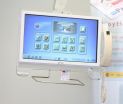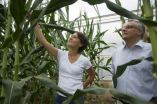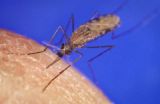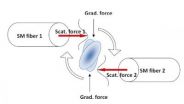(Press-News.org) This press release is available in Spanish.
Information and Communication Technologies (ICT) present tremendous potential in the field of healthcare, according to the researchers. "ICTs are going to contribute to a change in focus in aid and health services," comments Jesús Espinosa, CEO of IonIDE Telematics. According to accreditation and standardization associations, Spain is a leader in the management of clinical processes, because it has the greatest number of hospitals that have adopted electronic medical record (EMR). This computerized registry of patients' social, preventive and medical data allows all of that information to be centralized in an integrated multimedia system that can be accessed when necessary, for example in the case of emergencies, primary care or hospital admissions.
In this project, IonIDE is trying to attach the EMR to the foot of the patient's bed. To do this, they have proposed exchanging the traditional television found in many hospital rooms for a touch screen that can be voice activated, and through which all of the patient's clinical information can be accessed, as can other services connected to ICT, such as entertainment and communication. In fact, they have already collaborated with Grupo Hospitalario Povisa (Povisa Hospital Group) to implement this system using a multifunctional integrated terminal (data, voice and TV), called IonPAD, which is attached to one end of an adapted articulated arm. Now the researchers at UC3M's Centro de Innovación para la Discapacidad y Dependencia (Center for Disability and Dependence) have added a user interface to the device for use by patients with some degree of incapacity.
VIDEO:
A video explaining electronic medical records being attached to the foot of patients' hospital beds.
Click here for more information.
"We have developed a speech recognition system that allows the IonPAD to be controlled by voice, in addition to a voice synthesis system that allows individuals with a visual handicap to understand what is shown on the screen," explains Luis Puente, of the SOFTLAB research group at UC3M and the Centro Español de Subtitulado y Audiodescripción (CESyA- Spanish Center for Subtitling and Audiodescription), which operates in the University's Science Park. "Surprisingly," he adds, "there was no solution available that enabled a handicapped person to have access to this type of service." Currently, the system that is in the testing phase shows an 81% rate of accuracy, although with further filtering and specific training the researchers expect to achieve rates of up to 95%. "The most complicated part," Luis Puente says "has been obtaining an interface that would be accessible to the majority of the handicapped patients, and which would also be economically viable, because we have had to base our equipment on adapted commercially available equipment along with open source software or software we designed ourselves."
For doctors and patients
This novel multi-tactile terminal can be used by medical and nursing personnel to access a patient's electronic medical history, introduce vital signs, report on the treatments administered or see reports regarding tests that have been carried out, such as MRIs, x-rays, etc. In addition, the patients can use the terminals to access hospital services (notify the nurse's station, select a dietetic menu, receive information, etc.), for personal entertainment (television, games, etc.), and to communicate (telephone, videoconference, e-mail, etc.). With the introduction of the accessible terminal, patients with motor or sensorial handicaps will be able to use it (thanks to voice command, audiodescription and subtitles) and overcome the barriers that habitually impede their access to information technology.
The innovation here consists in equipping the content audiodescription and execution systems with voice command capability. "A blind person will be able to know what contents are available and to select the ones they are interested in simply by speaking to the device; or someone whose arms are in plaster casts will be able to change the television channel by telling the ionPAD terminal to do so, without having to rely on help from a companion or a nurse, which up until now was absolutely essential," explains Roberto Peña, the technical director of IonIDE. "This way," he continues, "not only are we improving the integration of the handicapped into society, we are also improving the efficiency of hospital resources, allowing the personnel to dedicate their time to purely medical tasks."
INFORMATION:
IonIDE Telematics is a technologically based firm created as a start up incorporating the R + D capabilities and resources of Quantion Tecnologías de Telecomunicación, a company which was founded in 2006, and which is a pioneer in implementing ICT solutions that involve computerizing patient's hospital beds. Currently, ionIDE is located in UC3M's Business Incubator in the Science Park of Leganés Tecnológico (Leganés Technology Park), a space that has benefited from synergies with the Centro de Innovación para la Discapacidad y la Dependencia (Center for Disability and Dependence) at Universidad Carlos III of Madrid's Science and Technology Park. This project constitutes an example of the transfer of academic knowledge to the entrepreneurial fabric, and of how a young, technology-based company can enter the market with force, offering technologically advanced solutions thanks to the innovation and knowledge transfer that UC3M's Science Park provides.
An innovation will attach patients' electronic medical record to the foot of their hospital bed
2012-12-03
ELSE PRESS RELEASES FROM THIS DATE:
Corn: Many active genes - high yield
2012-12-03
Hybrid plants provide much higher yield than their homozygous parents. Plant breeders have known this for more than 100 years and used this effect called heterosis for richer harvests. Until now, science has puzzled over the molecular processes underlying this phenomenon. Researchers at the University of Bonn and partners from Tübingen and the USA have now decoded one possible mechanism in corn roots. More genes are active in hybrid plants than in their homozygous parents. This might increase growth and yield of the corn plants. The results are published in the renowned ...
Have Venusian volcanoes been caught in the act?
2012-12-03
Six years of observations by ESA's Venus Express have shown large changes in the sulphur dioxide content of the planet's atmosphere, and one intriguing possible explanation is volcanic eruptions.
The thick atmosphere of Venus contains over a million times as much sulphur dioxide as Earth's, where almost all of the pungent, toxic gas is generated by volcanic activity.
Most of the sulphur dioxide on Venus is hidden below the planet's dense upper cloud deck, because the gas is readily destroyed by sunlight.
That means any sulphur dioxide detected in Venus' upper atmosphere ...
Malaria parasite's masquerade ball could be coming to an end
2012-12-03
More than a million people die each year of malaria caused by different strains of the Plasmodium parasite transmitted by the Anopheles mosquito. The medical world has yet to find an effective vaccine against the deadly parasite, which mainly affects pregnant women and children under the age of five. By figuring out how the most dangerous strain evades the watchful eye of the immune system, researchers from the Hebrew University of Jerusalem have now paved the way for the development of new approaches to cure this acute infection.
Upon entering the bloodstream, the Plasmodium ...
BU, VA study describes 68 CTE cases in veterans, high school, college and pro athletes
2012-12-03
(BOSTON) – A study done by investigators at the Boston University Center for the Study of Traumatic Encephalopathy (CSTE) and the Veterans Affairs Boston Healthcare System, in collaboration with the Sports Legacy Institute (SLI), describes 68 cases of chronic traumatic encephalopathy (CTE) among deceased athletes and military veterans whose brain and spinal cords were donated to the VA CSTE Brain Bank. Of the 68 cases, 34 were former professional football players, nine had played only college football, and six had played only high school football. The results, which will ...
New York's Medical Schools urge Congress to preserve NIH funding for scientific research
2012-12-03
The Associated Medical Schools of New York (AMSNY) today directed a letter to the New York State Congressional
Delegation calling on them to reject a nearly 10-percent cut to the National Institutes of Health (NIH), Medicare and
Title VII health professions programs, that will take effect January 2, 2013.
"In order to meet the health challenges of an aging and increasingly diverse population, continue to foster the types
of innovation that will drive our regional economy, and remain a vibrant force in the global economy, we need to
invest more in medical research ...
World's smallest wrench puts a new twist on microscopic manipulation
2012-12-03
Harnessing laser light's ability to gently push and pull microscopic particles, researchers have created the fiber-optic equivalent of the world's smallest wrench. This virtual tool can precisely twist and turn the tiniest of particles, from living cells and DNA to microscopic motors and dynamos used in biological and physical research.
This new twist on controlling the incredibly small, developed by physicists at The University of Texas at Arlington, will give scientists the ability to skillfully manipulate single cells for cancer research, twist and untwist individual ...
Male chimpanzees choose their allies carefully
2012-12-03
The ability of male chimpanzees to form coalitions with one another in order to direct aggression at other male chimpanzees has certain benefits. A new study by Ian Gilby at Duke University in North Carolina and his colleagues has further revealed that it may not just be the coalition that is important, but who the coalition is with that determines future success. Their study finds that male chimpanzees with central positions in the coalitionary network were most likely to father offspring and increase in rank. Specifically, those who formed coalitions with males who did ...
Research explores markers of depression from childhood to adulthood
2012-12-03
Although several studies have followed the course of depression throughout the lifespan, the characteristics of depression at different developmental stages haven't been clearly identified. New research published in Clinical Psychological Science, a journal of the Association for Psychological Science, presents a unique longitudinal investigation of depression across four critical developmental periods from childhood to adulthood.
To better understand the developmental course of Major Depressive Disorder (MDD), Paul Rohde of the Oregon Research Institute and colleagues ...
Experts urge rapid evaluation for swallowing and voice problems after brain surgery
2012-12-03
Johns Hopkins experts are recommending early post-surgical assessment
-- preferably within 24 hours -- for trouble chewing and swallowing
food, or speaking normally, among patients who have had benign tumors
removed from the base of the brain.
Such early assessments, they say, may minimize complications
associated with the sometimes hazelnut-sized tumors, called
vestibular schwannomas. Damage can arise when the tumors themselves
press on the nearby cranial nerves -- key to controlling the tongue,
lips, mouth and throat -- or from the surgery itself.
Researchers ...
Leuven research opens new pathway for the treatment of Alzheimer's disease
2012-12-03
Scientists from VIB and KU Leuven have discovered a new target molecule for the development of a treatment against Alzheimer's disease. There is currently no cure for this disease. Many candidate drugs fail because they also target proteins essential to life. This discovery from Leuven could form a target for a treatment against Alzheimer's disease with fewer side effects and that suppresses the very first symptoms of the disease. This research will be published in the leading journal Nature Medicine.
Alzheimer's Disease
Alzheimer's Disease is the most common form of ...




